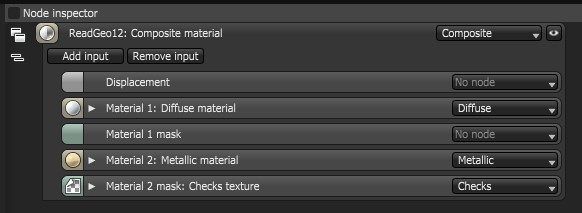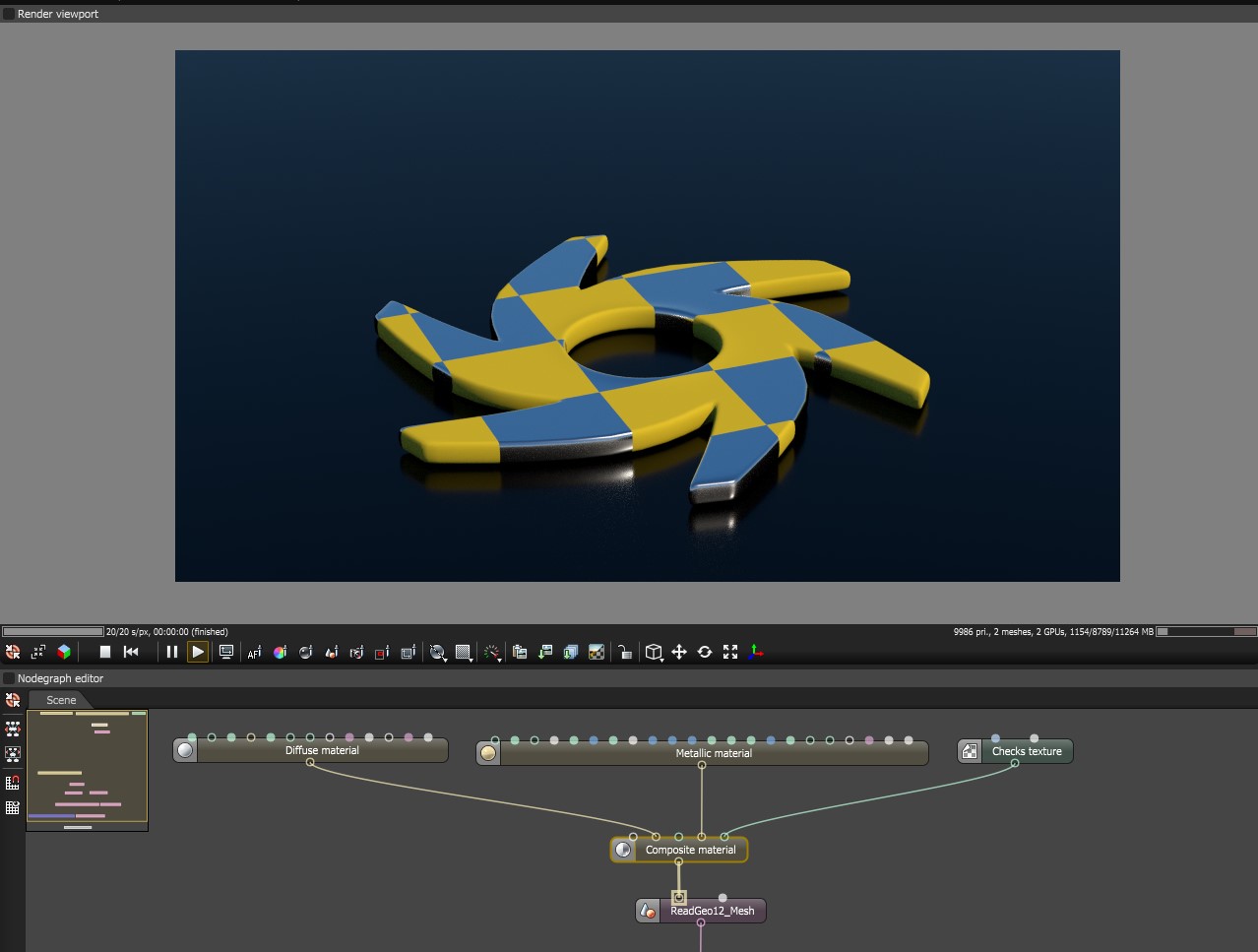
The Composite material node mixes several materials using masks. This is much cleaner than using several chained Mix materials. If a mask is not connected, the material's Opacity is used. The first MaterialThe representation of the surface or volume properties of an object. pin becomes the base layer.

Figure 1: The attributes of a Composite Material node
Add Input - Adds a new Material input to the end of the node.
Remove Input - Removes the last Material input.
DisplacementThe process of utilizing a 2D texture map to generate 3D surface relief. As opposed to bump and normal mapping, Displacement mapping does not only provide the illusion of depth but it effectively displaces the actual geometric position of points over the textured surface. - Displacement for the Composite Material surface.
Material - The Material input. When several MaterialsA set of attributes or parameters that describe surface characteristics. are used, the first Material pin becomes the base layer.
Material Mask - Controls the Material’s opacity using an Input map. If a mask is not connected, the Material's opacity is used.

Figure 2: A Composite Material combining a DiffuseAmount of diffusion, or the reflection of light photons at different angles from an uneven or granular surface. Used for dull, non-reflecting materials or mesh emitters. and a Metallic material using a Checks texture as a mask.